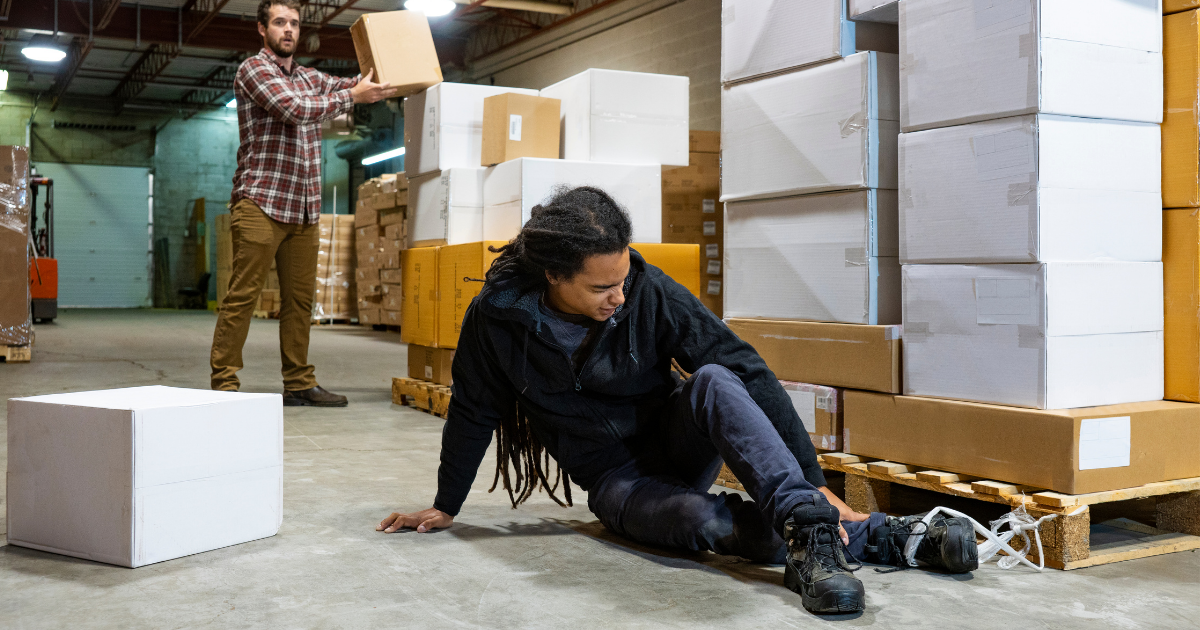The threat of being hit by a falling object is a serious concern on construction sites and other similar workplaces. Approximately 50,000 workplace injuries occur each year as a result of workers being struck by a falling object, according to the Occupational Safety and Health Administration (OSHA). These accidents happen when a person working on a scaffold, raised platform, or other elevated work surface drops a tool or knocks a piece of work equipment over the edge of the high-up work area. The danger can come from someone knocking over a huge machine, such as a generator, or even just a small handheld tool that gains force as it falls, endangering those working in or passing by the area below.
According to the Bureau of Labor Statistics, 240 work-related fatalities were caused by workers being struck by falling objects or equipment in 2019. This type of accident accounted for eight percent of workplace deaths in the construction industry alone.
For this reason, managers in construction and other fields, workplace safety supervisors, and rank-and-file workers must make it a priority to implement and adhere to a drop prevention program. In addition to the safeguards that include toe boards, tool nets, and hard hats that catch falling objects or that slow them down or reduce the force of their impact, industries that require workers to perform job tasks at heights must put in place additional protections to keep objects from being dropped in the first place.
Steps to Help Prevent Injuries from Falling Objects
Some of the elements of such a program include the following efforts to address falling-object hazards:
- Educating workers of the dangers posed by dropped objects and equipment. Workers on the ground should be made aware of how to keep themselves protected and out of harm’s way. Additionally, workers at risk of dropping tools or other objects should be trained to use tethers and other products to prevent dropped object hazards.
- Performing a dropped object safety evaluation. Use a checklist to survey the entire worksite and assess each work function to identify which areas and jobs put people at risk of a dropped object injury.
- Putting a plan in place. Once the evaluation is complete, the next stage is to implement a plan for how to address the dangers, including providing many of the mitigation products that are listed below.
- Providing products and PPE to keep workers safe. Along with hard hats for workers below, employees who work at heights should be supplied with the proper products to keep their tools and equipment from becoming a falling-object hazard. Managers must insist that safety products and protocols are used without exception.
Equipment Used to Prevent Falling Object Injuries
Some of the products that can be used to prevent injuries from being struck with a dropped object are as follows:
- Tethers, ropes, ties. These simple products can secure a small tool or object to a worker’s belt or body. Objects can also be fastened to a work bucket or secured tool corral. Objects heavier than five pounds should not be attached to a person. Larger equipment can be attached to a scaffold or other fixed structure.
- Tool holsters with harness and retractors. These wearable tool receptacles include a feature that keeps the tool from falling if it slips out of the worker’s hand.
- Small object pouches. Nails, screws, and similar small objects can be secured in small bags or pouches with closure systems.
- Wristband with cord. Similar to those listed above, this gadget can be attached to a handheld tool to eliminate the danger of it becoming falling hazard.
- Energy-absorbing or shock-absorbing lanyards. These products are used to keep people from falling, which is a threat to the falling person as well as anyone in their path. The energy-absorbing features keep the falling person from being injured by the safety gear itself.
Other Practices to Keep Workers Safe
Additional suggestions that can be instituted to keep people safe from dropped objects include the following practices:
- Remove unsecured items from pockets, including cell phones and pencils, to avoid dropping them.
- Bring only tools needed for the job to eliminate unnecessary objects that could fall.
- Hand tools off to a coworker using a system in which they attach to the tool before you remove your connection to it.
- Refrain from hanging objects on guardrails.
- Do not exceed the weight limits of the tethers and connectors.
- Avoid having anyone work below an elevated work site or under a suspended load.
- Cordon off the area below the elevated work site to keep people out of the potential danger zone.
- Use hoists to bring items up to the work surface and transfer them using connectors and fixed anchor points.
- Ensure that cranes and hoists are in good condition and that they can handle the load being lifted.
- Any objects, tools, or materials not being actively used should be kept at least three feet from the leading edge at all times.
- Building materials and similar items that are kept for use at heights should be stacked or stored in such a way that they do not run the risk of sliding or falling.
Securing Objects Incorrectly can Put Workers in Danger
Any tether set-up should take into consideration the weight of the object being secured and the suitability of the product being used to secure it. Tethers can be used to secure objects that weigh up to 80 pounds. However, any item that weighs more than five pounds should be secured to a fixed structure rather than to a person. If a heavy object were to fall while connected to a person, the force of its weight could cause an injury or cause the person to be pulled over the edge along with the object.
Hard Hats are a Last Resort, but They are Vital
When falling objects threaten injury, one item that stands the best chance of helping is wearable head protection such as a hard hat or safety helmet.
OSHA statistics indicate that work accidents that cause head injuries kill approximately 1,000 people each year. In those accidents, 84 percent of these fatal injuries involved a lack of head protection.
Wearing head protection is crucial for worker safety when working in construction and other similar industries. It is imperative that workers at risk of head injuries wear the proper gear to offer appropriate protection. When it comes to hard hats and safety helmets that protect workers, there are two types:
- Type I. The first type is intended to protect the top of the wearer’s head from the force of a direct downward impact. These include the lightest and least bulky types of head protection.
- Type II. The second type of head protection protects the wearer from blows coming from above as well as from various angles. Type II hard hats and safety helmets protect from blows that are off-center or come from the side or rear. Type II head protection involves more padding than Type I models.
One feature of wearable head protection that offers additional protection at odd angles is a chin strap. Safety helmets that include a chin strap keep the protective gear in place when the wearer bends over while working. It also protects the wearer during a fall in which head trauma is possible from any angle.
Our Lawyers Prove the Eligibility of Claims Denied after Work Accidents
If you were hurt by a falling object in the workplace, you have the right to claim employee benefits to cover the medical bills or lost wages that you suffered as a result of the work accident. The lawyers at Pietras Saracino Smith & Meeks, LLP, can help you recover the compensation you deserve. If your claim was denied, our experienced lawyers can prove your claim by collecting evidence to prove that your accident is eligible for coverage. Workers’ compensation is our focus. Call us today at 856-761-3773 or contact us online to schedule a free consultation. Located in Cherry Hill, New Jersey, we serve clients in Camden, Cinnaminson, Delran, Maple Shade, Pennsauken, and throughout South Jersey.







